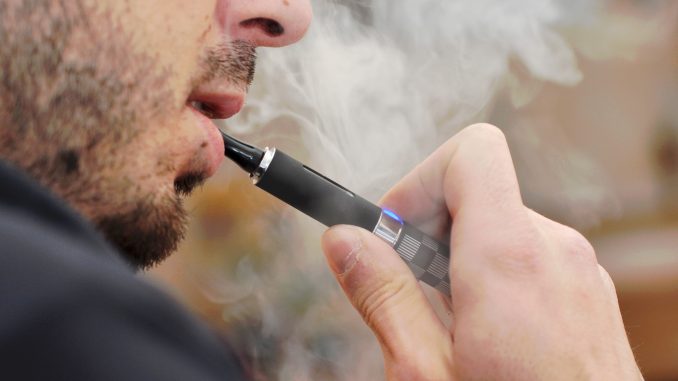
Jessica Kennedy, Staff Writer
Since the start of the vaping trend, more and more people have been diagnosed with vaping-related illnesses. Medical professionals are still speculating what specifically is causing these illnesses, which have been most commonly found in males averaged around 19 years old.
Companies who manufacture and sell vaping products claim that their products were specifically made for adults who wanted a better alternative to smoking cigarettes but still get their nicotine doses. The new vaping products seemed safer at the time because there had been no studies done yet to prove the negative effects of vaping. When vape pens became popular, many teens thought electronic smoking was cool and purchased products like the “Juul” and “Suorin” with fruit and candy-flavored pods. Though it may have seemed enticing with the fun flavors and popularity, vaping has caused unnecessary nicotine addictions in teens. Now years after vaping products have become popular, people are starting to realize that vaping isn’t as safe as they thought it was. Many have started experiencing symptoms of coughing, chest pain, shortness of breath, nausea, vomiting, diarrhea, fatigue, fever, and unintentional weight loss.
Research by the Centers for Disease Control and Prevention (CDC) shows 530 cases of lung injuries in the U.S. and a U.S territory, and seven deaths have been associated with e-cigarette and vaping use. These lung injuries have been found in 38 states, and six of these states have had vaping-related deaths. Of these cases, 72 percent of the victims were male, and 67 percent of the cases occurred in individuals from 18-34 years old and only 17 percent are over the age of 35. Though medical professionals and the CDC know these cases are all vaping-related, they have yet to figure out if the illnesses come from a specific device, liquid, refill pod, cartridge, or a substance within the vaping products.
The most common lung illnesses vapers have been diagnosed with and hospitalized for are acute respiratory distress syndrome and pneumonia. Both of these sicknesses occur when fluid and/or pus builds up in one’s lungs and prevent the natural flow of oxygen through the lungs and blood stream. The use of electronic smoking devices is also known to age youths and young adults’ lungs by decades older than what they should be.
One case of a teen being diagnosed with a vaping-induced acute lung injury is 18-year-old Adam Hergenreder. Hergenreder was a user of the vaping product “Juul” and was told by a doctor that his lungs are those of a 70-year-old. Hergenreder, much like the Trump administration, believes that the Juul company intentionally falsely marketed to young adults to get them to use the company’s product even though there was little to no information of the long-term effects of vaping. The teen and his family filed a lawsuit against Juul Labs for compensation of his lung injuries and believe, as many others do, that the vaping companies should take responsibility for marketing to the nation’s youth that their products are safe and cool.
The Juul company publicly stated recently that, “Our product has always been intended to be a viable alternative for the one billion current adult smokers in the world. We have never marketed to youth and do not want any non-nicotine users to try our products.” The products have, until recently, been easily available to youths in gas stations and online and were available in sweet flavors that are enticing to teens and young adults.
There are many resources such as teen.smokefree.gov that are designed to help teens quit smoking and using electronic cigarettes. Many teens and parents are hoping stricter purchasing laws and better marketing from vaping companies will help stop the growing number of young users.
Leave a Reply